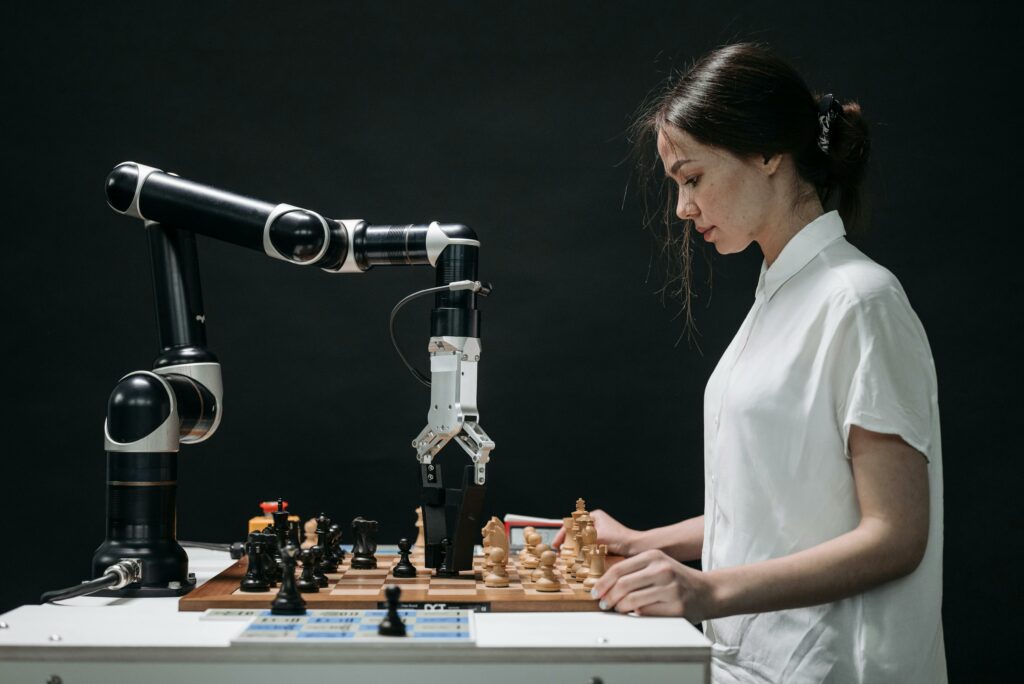Key Takeaways
- Understanding Roles: Game development involves diverse professionals, each with distinct roles like game designers, programmers, artists, sound engineers, producers, and QA testers.
- Non-Team Member Identification: Not all people involved with a game are part of the development team; roles such as marketing specialists, public relations experts, and game reviewers contribute indirectly.
- Key Contributions: Each core role plays a crucial part in creating engaging gameplay experiences, from conceptualizing ideas to managing production timelines and budgets.
- Collaboration Importance: Successful game development relies on effective collaboration and communication between team members to ensure a cohesive final product.
- Clarifying Misconceptions: Understanding which positions are essential versus non-essential helps clarify the structure of game development teams and their functional dynamics.
Game development is a complex process that brings together a diverse group of professionals, each playing a vital role in creating immersive experiences. From designers and programmers to artists and sound engineers, every team member contributes unique skills to the project. However, not everyone involved in the gaming world is part of the development team.
Understanding who makes up this dynamic group can help clarify the roles and responsibilities necessary for successful game creation. In this article, we’ll explore various positions related to game development and identify which one doesn’t belong. This insight can enhance appreciation for the collaborative effort behind the games players love.
Which of these is not a Team Member Involved in Game Development?
Game development teams consist of various professionals, each contributing distinct skills to the overall process. Understanding these roles helps clarify the collaborative nature of creating games.
Key Roles in Game Development
- Game Designers: Game designers conceptualize gameplay mechanics and player interactions. They outline the game’s structure and create core experiences that engage players.
- Programmers: Programmers write the code that powers the game. They implement gameplay features and ensure the functionality of graphics, physics, and artificial intelligence.
- Artists: Artists create the visual elements, including character designs, environments, and animations. They work closely with designers to bring the game’s aesthetic vision to life.
- Sound Engineers: Sound engineers develop audio effects and music tracks. They enhance the gaming experience by creating immersive soundscapes that match the game’s mood.
- Producers: Producers oversee the project timeline, budget, and communication among team members. They ensure the project stays on track and meets deadlines.
- Quality Assurance (QA) Testers: QA testers play the game at various stages to identify bugs and issues. They provide feedback on gameplay experiences and suggest improvements.
These roles collectively contribute to the successful development of games. Understanding which roles are fundamental helps in identifying non-essential positions in the game creation process.
Key Roles in Game Development
Understanding the key roles in game development reveals how each position contributes to creating engaging gaming experiences. Each role has specific responsibilities that combine to form a cohesive development team.
Game Designer
Game designers focus on developing gameplay mechanics and player interactions. They create game concepts, design levels, and formulate rules that dictate how players engage with the game world. Through prototyping and playtesting, they refine ideas based on player feedback, ensuring a compelling and fun experience.
Programmer
Programmers are responsible for writing code that brings the game to life. They develop the game’s engine, create gameplay systems, and ensure optimal performance across platforms. Debugging, implementing features, and collaborating with designers to translate concepts into functional elements are essential tasks they perform during development.
Artist
Artists create the visual components that define a game’s aesthetic. They design characters, environments, animations, and textures, contributing to the overall look and feel. Working closely with designers and programmers, artists produce assets that align with the game’s vision and enhance player immersion.
Producer
Producers oversee the project’s timeline, budget, and team collaboration. They establish workflows, manage resources, and facilitate communication between teams to ensure milestones are met. Their focus on project management helps prevent delays and ensures alignment with the game’s objectives.
Tester
Testers, or quality assurance testers, identify bugs and assess gameplay quality. They meticulously play the game to uncover errors, evaluate usability, and provide feedback on player experiences. Their insights inform development teams about necessary adjustments before the game’s release, ensuring a polished final product.
Identifying Non-Team Members
In the context of game development, recognizing which roles contribute to the project is vital. Misunderstandings about job functions can lead to confusion regarding team dynamics.
Common Misconceptions
Misconceptions about game development roles can create a false impression of contributions. Many people assume that all creative fields involve a team member, but certain positions exist outside this scope. For example, marketing professionals, while essential to a game’s success, do not participate in the actual development process. Additionally, public relations specialists may handle communications and media but aren’t involved in design or coding.
Examples of Non-Team Members
Several distinct roles contribute indirectly to game development but do not form part of the primary team.
- Marketing Specialists: They promote the game and manage relationships with potential players.
- Public Relations Experts: They handle the game’s publicity, ensuring positive media coverage.
- Game Reviewers: They critique and analyze games after release, but don’t partake in the creation process.
- Community Managers: They engage with gamers and manage feedback but aren’t directly involved in game production.
- Distributors: They manage the logistics of getting the game to retailers but do not influence the design or development of the game itself.
Understanding these distinctions clarifies the robust structure of a game development team and highlights those who do not participate in the creation process.
Importance of Each Role
Each role in game development contributes significantly to the overall success of the project. Understanding these roles clarifies the collaborative nature of the industry.
- Game Designers: Game designers create gameplay mechanics and player experiences. They conceptualize ideas and develop engaging content that players find enjoyable and challenging.
- Programmers: Programmers write and manage the code that powers the game. Their work ensures that the game functions smoothly and efficiently, addressing technical challenges throughout development.
- Artists: Artists are responsible for the visual elements of the game. They design characters, environments, and animations, establishing a visual narrative that captures players’ attention.
- Sound Engineers: Sound engineers develop audio effects and music, enhancing the immersive experience. Their contributions elevate gameplay through soundscapes that engage players emotionally.
- Producers: Producers oversee project management, including timelines and budgets. They coordinate communication among team members, ensuring that all components align for a cohesive final product.
- Quality Assurance Testers: QA testers identify bugs and gameplay issues. Their feedback is crucial in refining the game, ensuring a polished and enjoyable player experience upon release.
While roles such as marketing professionals and community managers support the game’s market presence, they do not participate in the core development process. Recognizing these distinctions clarifies the essential contributions of each member in creating compelling gaming experiences.
Understanding the roles involved in game development is crucial for appreciating the collaborative effort behind creating engaging experiences. While many professionals contribute to a game’s success, not all are part of the core development team. Recognizing which roles are essential and which are not helps clarify the intricacies of the game development process. By distinguishing between team members and external contributors, one gains a clearer perspective on how games are crafted. This knowledge enriches the overall appreciation of the gaming industry and the hard work that goes into bringing interactive stories to life.

